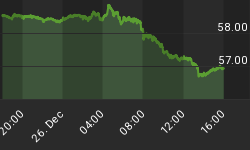
At times it may appear as if I randomly piecemeal aspects of historical trading environments together - a piece of 98' here, a dash of 02' there. But there's a method to my madness for each analog that continues to produce dividends in a very complicated trading environment. The binding agent as to why elements from several different market environments more often than not produces a useful technical framework for me is inherent in the understanding that the markets are not efficient and are driven more from behavioral reactions that replicate and are identifiable in the charts.
As I have alluded to in my previous notes, you can look at the credit crisis (which we still are navigating with the help of Big Ben) as a series of expanding reflexes to the deterioration of credit conditions in different aspects of the world economy. I also like to think of these reflexes in terms of their proportions and what that could mean for the indices down the road if history continues to rhyme and the effects of the credit crisis continues to replicate in different iterations in the markets.
The chart below is of the first quarter of 2007 when the initial tremors of the subprime mortgage crisis started floating to the surface. It's price structure has been on my radar for a few months (see Here and Here) because of the way the ABX market fell out of bed in a similar cascading fashion this spring. What is interesting to note from a structural perspective is the strong congruency of the two trading environments expressed with the SPX and the VIX. To be honest, I had expected our current range to materialize in June, but the market got a second (albeit very short) wind.
I consider an outcome similar to early 2007 where the market does not look back as an outlier possibility, however, considering the fact that almost everyone (bulls and bears alike) at this point expects at the very least a test of the early August lows, door #3 would certainly leave almost everyone flatfooted - a market specialty.


















